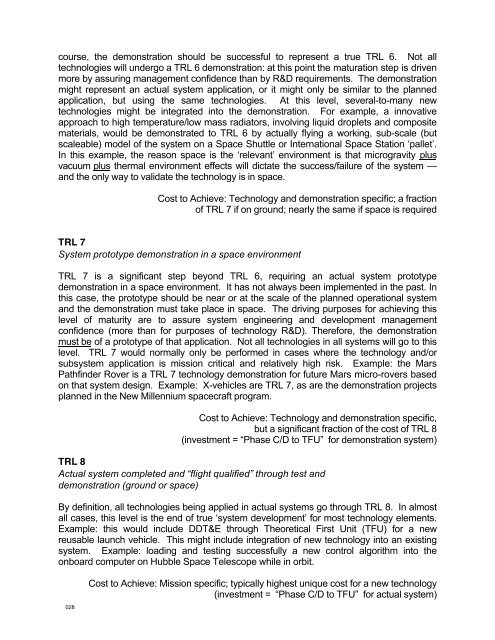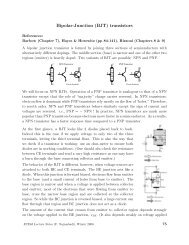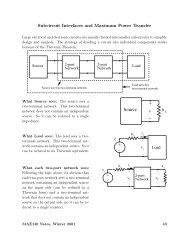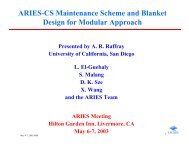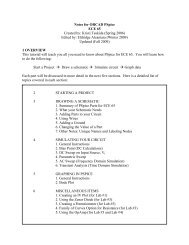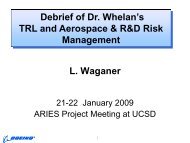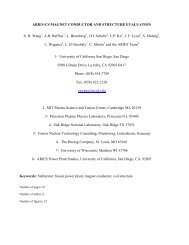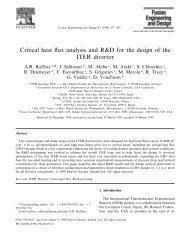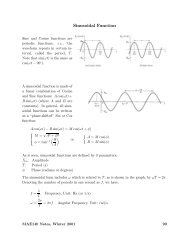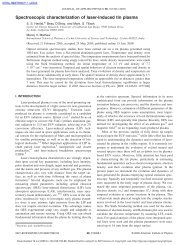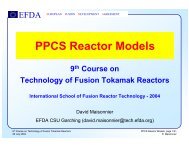TECHNOLOGY READINESS LEVELS A White Paper April 6 ... - NASA
TECHNOLOGY READINESS LEVELS A White Paper April 6 ... - NASA
TECHNOLOGY READINESS LEVELS A White Paper April 6 ... - NASA
You also want an ePaper? Increase the reach of your titles
YUMPU automatically turns print PDFs into web optimized ePapers that Google loves.
course, the demonstration should be successful to represent a true TRL 6. Not all<br />
technologies will undergo a TRL 6 demonstration: at this point the maturation step is driven<br />
more by assuring management confidence than by R&D requirements. The demonstration<br />
might represent an actual system application, or it might only be similar to the planned<br />
application, but using the same technologies. At this level, several-to-many new<br />
technologies might be integrated into the demonstration. For example, a innovative<br />
approach to high temperature/low mass radiators, involving liquid droplets and composite<br />
materials, would be demonstrated to TRL 6 by actually flying a working, sub-scale (but<br />
scaleable) model of the system on a Space Shuttle or International Space Station ‘pallet’.<br />
In this example, the reason space is the ‘relevant’ environment is that microgravity plus<br />
vacuum plus thermal environment effects will dictate the success/failure of the system —<br />
and the only way to validate the technology is in space.<br />
Cost to Achieve: Technology and demonstration specific; a fraction<br />
of TRL 7 if on ground; nearly the same if space is required<br />
TRL 7<br />
System prototype demonstration in a space environment<br />
TRL 7 is a significant step beyond TRL 6, requiring an actual system prototype<br />
demonstration in a space environment. It has not always been implemented in the past. In<br />
this case, the prototype should be near or at the scale of the planned operational system<br />
and the demonstration must take place in space. The driving purposes for achieving this<br />
level of maturity are to assure system engineering and development management<br />
confidence (more than for purposes of technology R&D). Therefore, the demonstration<br />
must be of a prototype of that application. Not all technologies in all systems will go to this<br />
level. TRL 7 would normally only be performed in cases where the technology and/or<br />
subsystem application is mission critical and relatively high risk. Example: the Mars<br />
Pathfinder Rover is a TRL 7 technology demonstration for future Mars micro-rovers based<br />
on that system design. Example: X-vehicles are TRL 7, as are the demonstration projects<br />
planned in the New Millennium spacecraft program.<br />
Cost to Achieve: Technology and demonstration specific,<br />
but a significant fraction of the cost of TRL 8<br />
(investment = “Phase C/D to TFU” for demonstration system)<br />
TRL 8<br />
Actual system completed and “flight qualified” through test and<br />
demonstration (ground or space)<br />
By definition, all technologies being applied in actual systems go through TRL 8. In almost<br />
all cases, this level is the end of true ‘system development’ for most technology elements.<br />
Example: this would include DDT&E through Theoretical First Unit (TFU) for a new<br />
reusable launch vehicle. This might include integration of new technology into an existing<br />
system. Example: loading and testing successfully a new control algorithm into the<br />
onboard computer on Hubble Space Telescope while in orbit.<br />
028<br />
Cost to Achieve: Mission specific; typically highest unique cost for a new technology<br />
(investment = “Phase C/D to TFU” for actual system)


